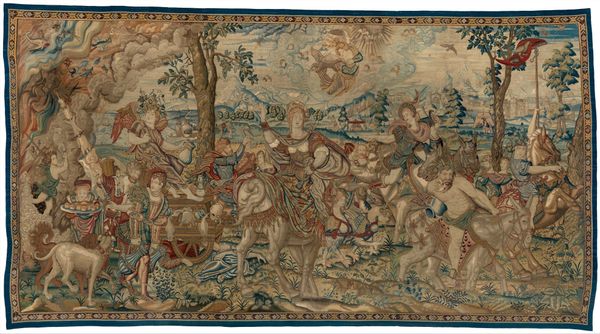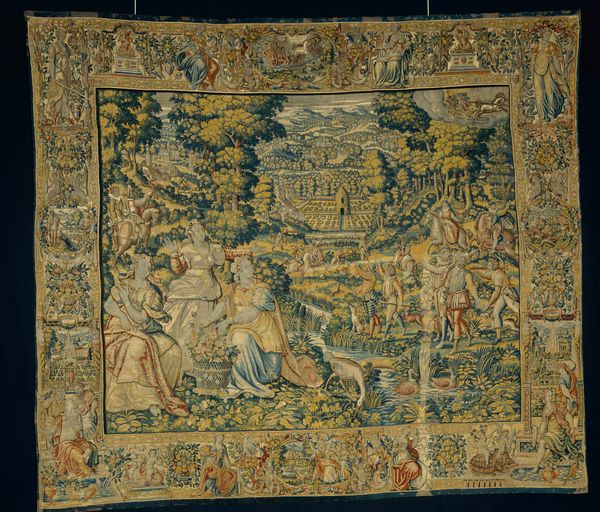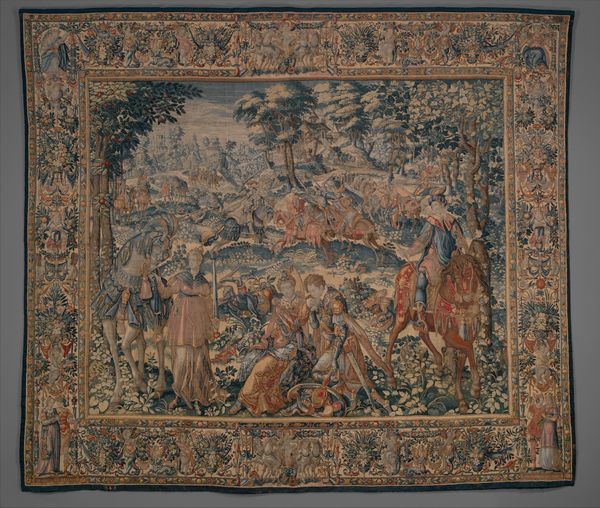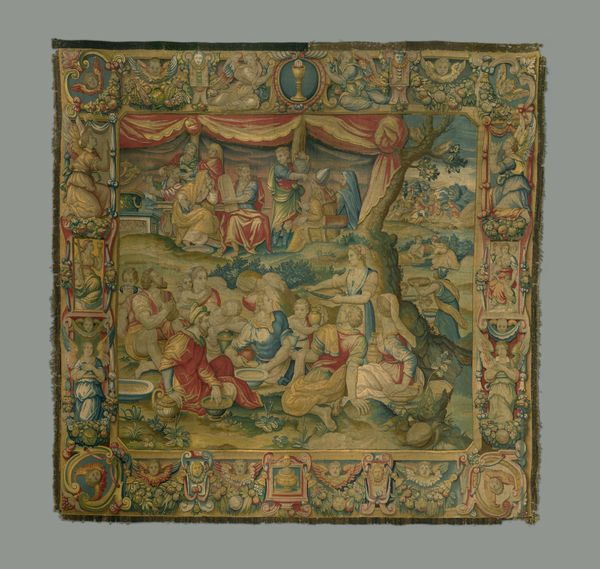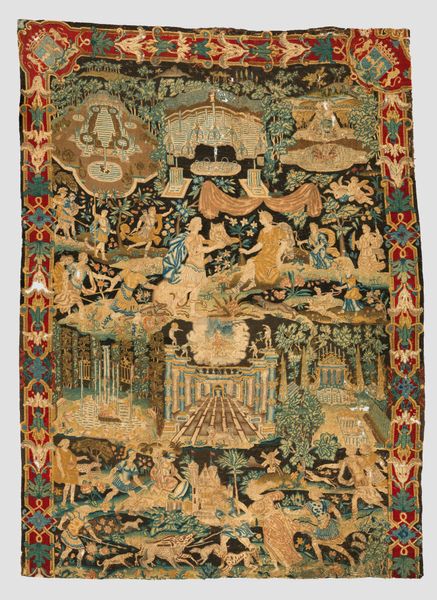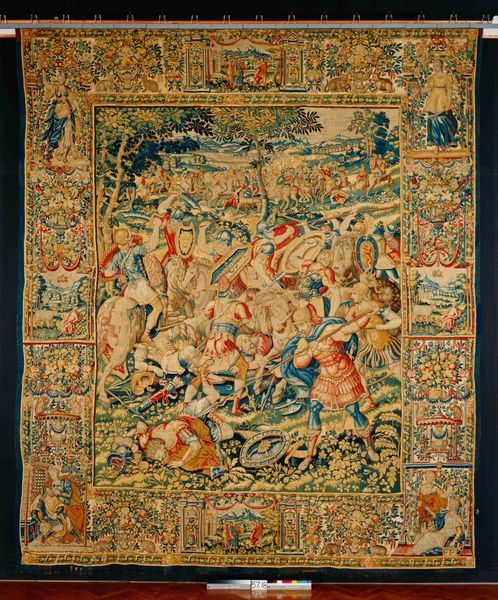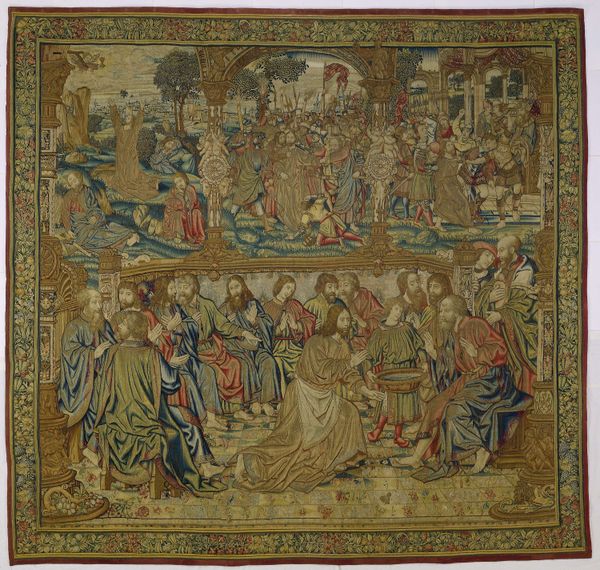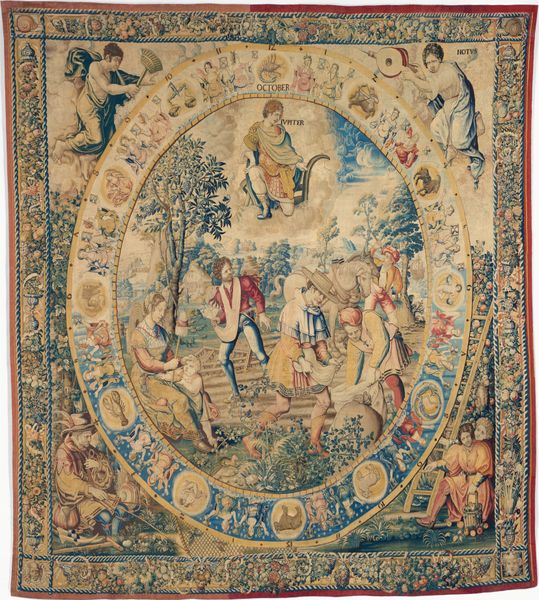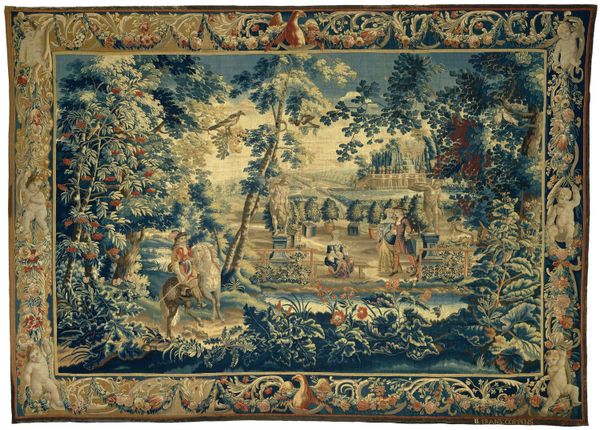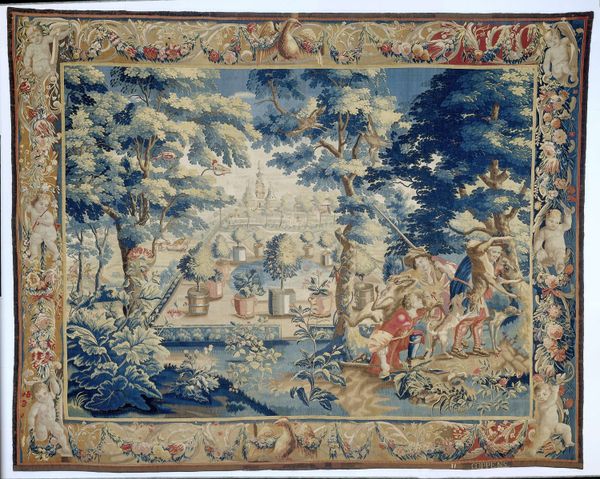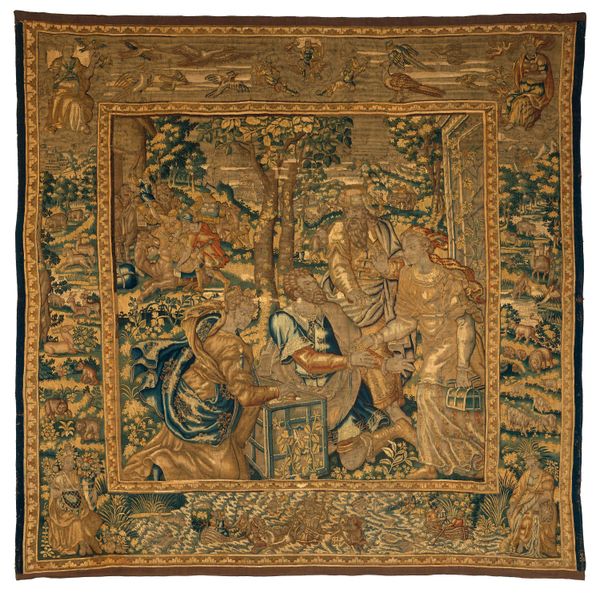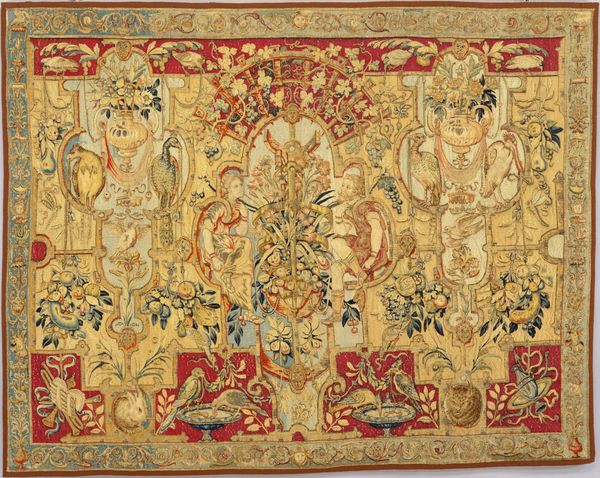
The Moon and Her Children from a Set of the Planets 1530 - 1565
0:00
0:00
print, textile
#
tree
#
boat
#
medieval
# print
#
landscape
#
textile
#
house
#
figuration
#
text
#
11_renaissance
#
watercolour bleed
#
history-painting
#
decorative-art
Dimensions: H. 138 x W. 204 inches (350.5 x 518.2 cm)
Copyright: Public Domain
Curator: Good morning. We’re here today to discuss "The Moon and Her Children from a Set of the Planets," a tapestry woven sometime between 1530 and 1565. Editor: My first impression is of watery serenity. A landscape filled with people wading, boating, fishing… It’s quite detailed, but also faded, softened. There's an undeniable sense of age about it. Curator: Indeed. These tapestries, pieces from a series, were more than mere decoration; they were signifiers of wealth and status. Consider the immense labor involved. Think of the looms, the weavers… producing a piece this large was a considerable investment of resources. Editor: The imagery feels decidedly lunar: the predominance of water, the idea of cycles with people engaging in these elemental tasks that are timeless. What strikes me most is this blend of mythological figures and the everyday. Notice the lunary figures presiding over a common waterfront with fishing, harvesting. It's powerful how gods were woven into the earthly tapestry. Curator: Exactly. We're witnessing the transformation of raw material – wool, silk, possibly metal threads for shimmer – into a potent cultural object. Each thread is a unit of labor, intricately connected to create a larger, symbolic message about earthly dominion as reflected from above. This piece also gives visual weight to how intertwined beliefs of cosmic design were enmeshed with lived life and common labor. Editor: There’s also an undercurrent of human struggle— of nature, against hunger, against the elements that runs deeper here than just pleasant decorative landscape art, however gorgeous. See also the symbolic watercraft at the top bearing figures as evidence to cosmic themes; but I think these elements coexist to show a comprehensive world-view where human nature is ever reflected by cycles in space. It reflects a kind of Renaissance synthesis of Classical and Medieval traditions, creating its distinct visual language. Curator: A key element is the tapestry's original function. Woven into a larger narrative cycle on astrological design as well as acting as insulation; this artifact would change, slowly breaking apart from constant tension upon vertical surfaces under shifting environmental factors until now displayed in careful environments preserving it so viewers in our day could examine closely all that can be seen with each visual element. Editor: And thinking about the cyclical imagery reflected and absorbed then returned—this work almost allows us to feel linked directly back throughout periods past! Thanks. Curator: Precisely! It’s in considering the full production chain, from fiber to final hanging, and understanding historical context that informs our experiences together, understanding ourselves. Thank you.
Comments
No comments
Be the first to comment and join the conversation on the ultimate creative platform.
